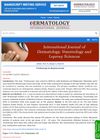TLDR PUVA-therapy is not very effective for severe hair loss types like alopecia totalis or universalis.
The document discussed PUVA-therapy as a treatment for alopecia areata, a common cause of hair loss with unknown etiology. It noted that while spontaneous remissions could occur, the prognosis for regrowth was poor in cases of alopecia totalis or alopecia universalis. The study was conducted by I. Weissmann, C. Hofmann, and G. Wagner from the University of Munich, and it was published in 1981. The document did not provide specific details on the study's findings or the number of participants involved.
 January 2021 in “International journal of dermatology, venereology and leprosy sciences”
January 2021 in “International journal of dermatology, venereology and leprosy sciences” Trichoscopy shows black dots, yellow dots, and empty follicles are common in Alopecia Areata, with broken and exclamation mark hair as typical patterns.
May 2018 in “Journal of cosmetology & trichology” Combining platelet-rich plasma therapy with prostaglandin-F eye drops can significantly regrow hair in alopecia universalis.
Trichotillometry can measure hair plucking force, aiding alopecia treatment evaluation.
June 2001 in “European Journal of Dermatology” A 54-year-old woman experienced progressive hair loss starting in adolescence, leading to sparse scalp hair and almost no eyebrows or eyelashes.
 26 citations
,
January 1994 in “McGraw-Hill eBooks”
26 citations
,
January 1994 in “McGraw-Hill eBooks” Many hair loss conditions can be treated.

